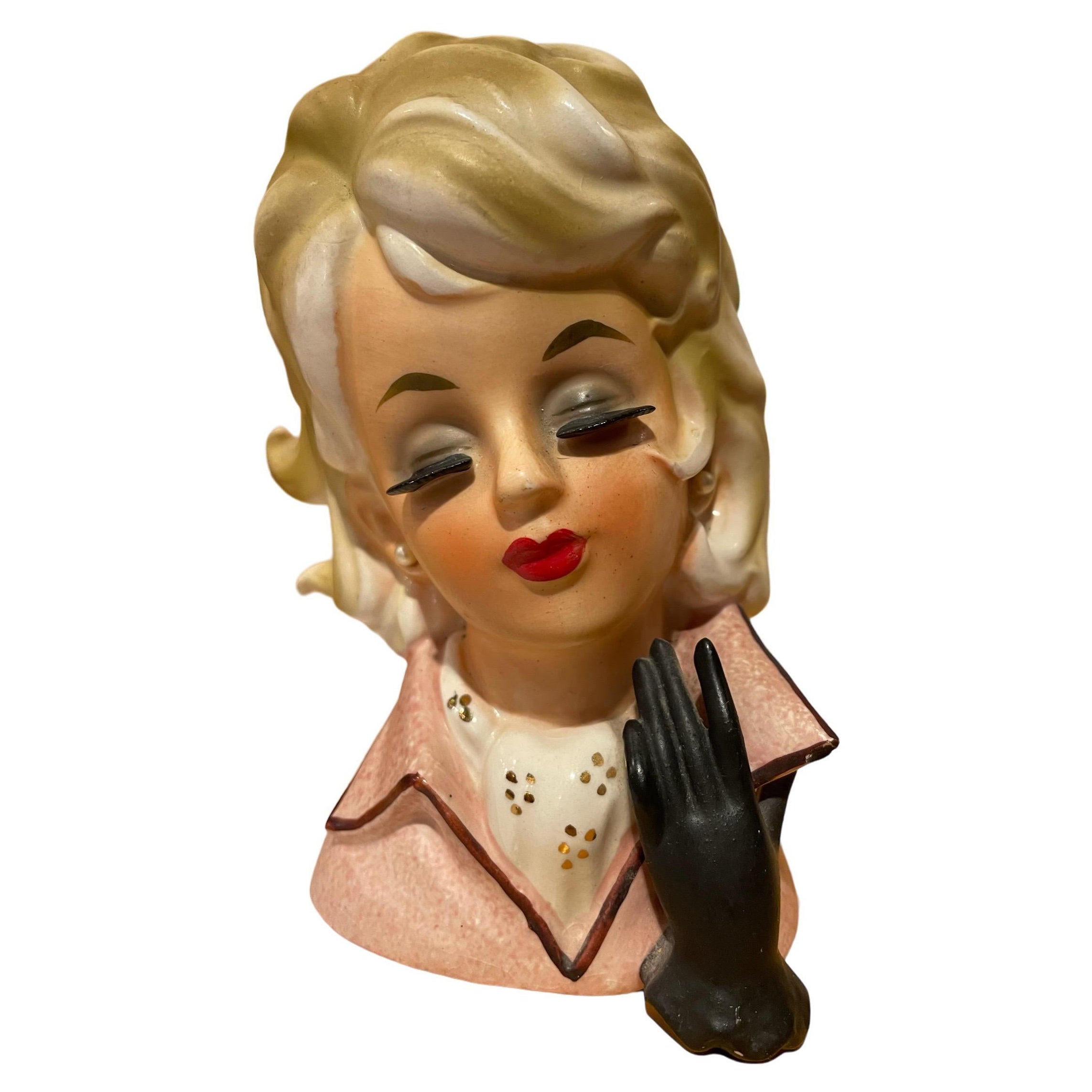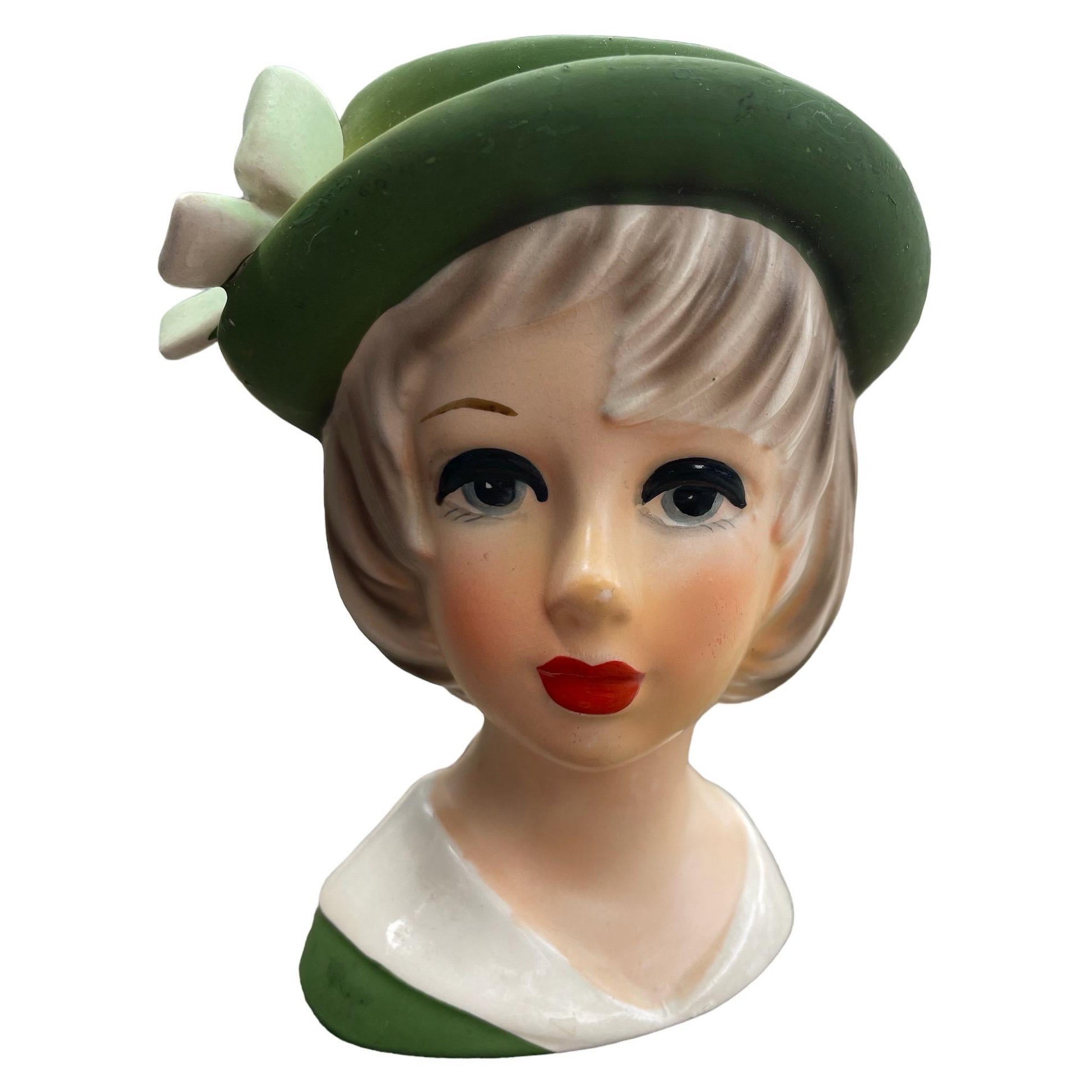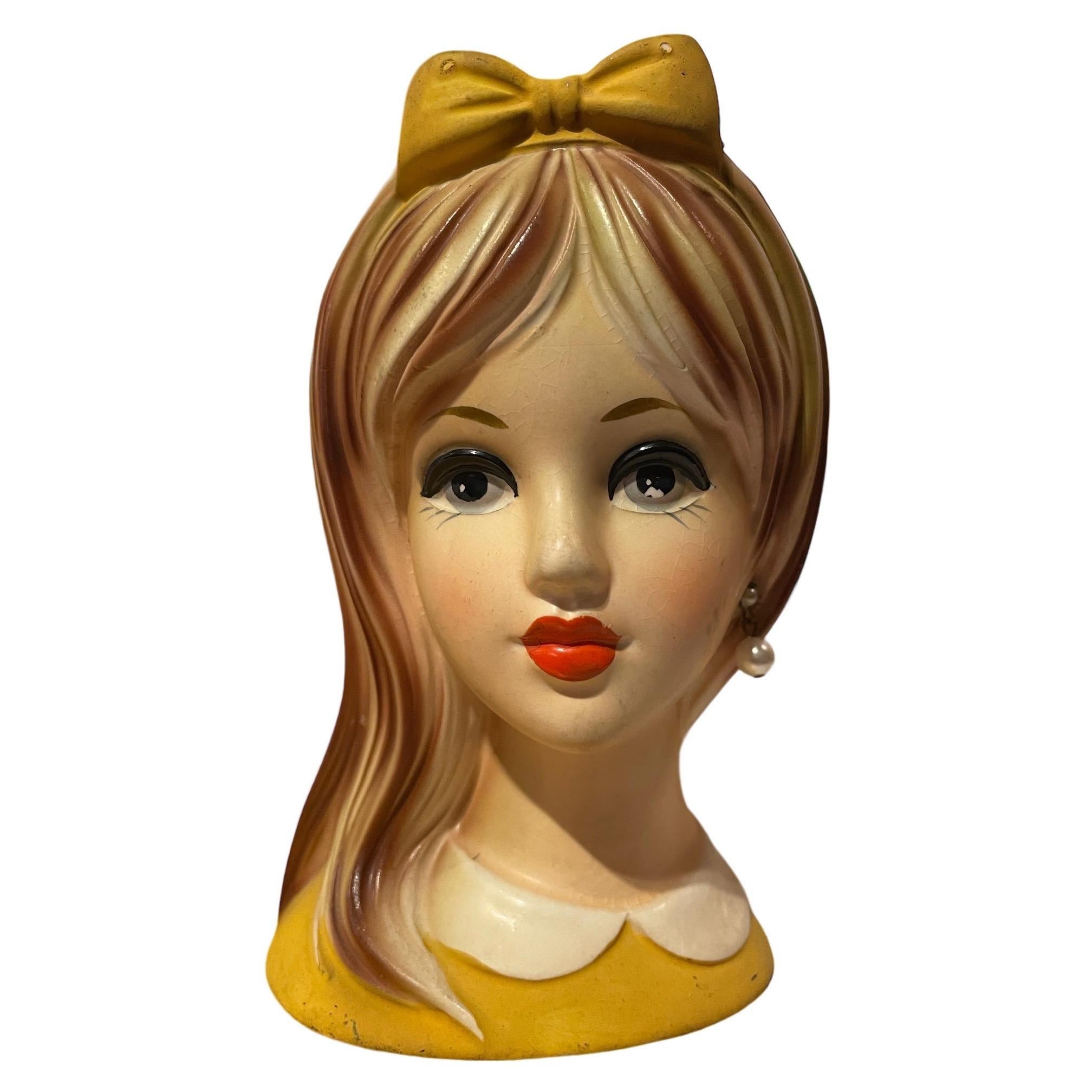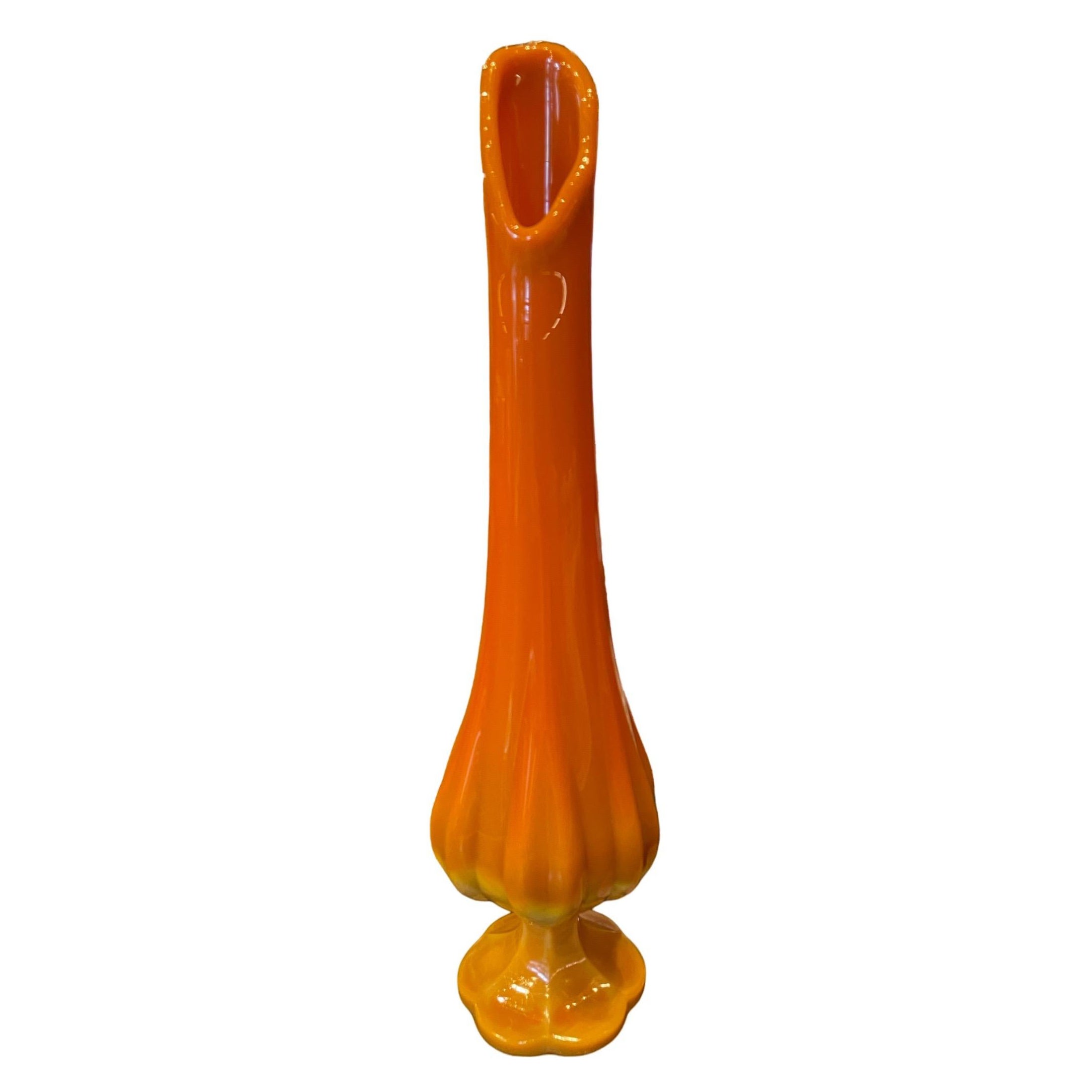Carder Steuben Rare BlownGlass "MossAgate" Numbered Blue Matrix Crackle Vase
About the Item
- Designer:Steuben Glass
- Brand:Steuben Glass
- Dimensions:Width: 4 in (10.16 cm)Depth: 2.5 in (6.35 cm)Length: 6 in (15.24 cm)
- Style:art glass (In the Style Of)
- Place of Origin:
- Period:1920-1929
- Condition:Wear consistent with age and use.
- Seller Location:Chicago, IL
- Reference Number:1stDibs: LU3244221295492
Steuben Glass
Steuben Glass Works is the most illustrious name in American art glass. Its vividly colored Art Nouveau and Asian-style wares produced in the early 20th century as well as later modernist works rendered in flawlessly clear crystal are objects of striking beauty and delicacy.
The Steuben Glass Works was cofounded in 1903 in the town of Corning, New York, by Frederick Carder, an alum of celebrated British glassmaker Stevens & Williams and a self-taught English chemist and glassmaker. Carder was a restless experimenter, constantly creating new color formulas that resulted in a wide array of hues, from milky jades to his iridescent Aurene shades. A favorite Carder technique was to acid-etch decorative patterns into pieces made of glass layered in different colors. The forms of his vessels were relatively conservative. Most are based on classic Chinese pottery; many display the flowing, naturalistic lines of the Art Nouveau period.
The larger local firm Corning Glass acquired Steuben in 1918. The company’s approach to art glass changed radically in the early 1930s, when Corning chemists devised a new type of crystal known as 10M, with perfect clarity and brilliant refractive powers. Corning decided that, henceforth, all Steuben decorative objects, vases, sculptures and other wares would be made from the crystal.
Art glass was made in two formats: molded and polished abstract sculptures and figurines, or pieces for which artists used Steuben crystal as a sort of canvas. The first such artwork was sculptor Stanley Waugh’s 1935 Gazelle Bowl, a vessel etched with brawny Art Deco animal forms. In later years, Steuben would invite artists that included Henri Matisse, Georgia O’Keeffe and Isamu Noguchi to “paint” in the firm’s crystal.
Steuben glass comes in myriad forms and is available in a broad range of price points. Jewel-toned glasses and tableware from the Carder era include candlesticks marked at $300 and full dinner services for more than $10,000. Small crystal figurines bring around $1,000, while larger sculptures are priced in the neighborhood of $7,000.
Steuben glass, with its impeccable artistry and timeless grace, deserves a place in any collection.
Find antique Steuben glass and other furniture on 1stDibs.
- ShippingRetrieving quote...Ships From: North Adams, MA
- Return PolicyA return for this item may be initiated within 1 day of delivery.
- LimitedEdition Vase AperitifGlass JeanNouvel 2002 Signed for French LiqueurSuzeBy DaumLocated in Chicago, ILAs a signed and 2002-dated limited edition, French architect and furnishings designer Jean Nouvel was commissioned to create this yellow-accented vase or aperitif glass for one of th...Category
Early 2000s French Vases
- MontblancMeisterstuckClassique Germany Gilt BlackResin Rollerball Pen with InkBy MontblancLocated in Chicago, ILThe best-known writing instrument of all Montblanc collections, this Meisterstuck Classique features six gilt rings and clip on the black-resin rollerball pen with a pull-off cap, un...Category
20th Century German For The Desk
- Couture MartinMargiela 1998 WorkOnPaper & Artisanal Line0 WhiteLingerie BoxedSetBy Maison Martin Margiela, Martin MargiellaLocated in Chicago, ILAs conceptual art while he transitioned to Hermes Creative Director in 1998, Belgian Martin Margiela--whose creations today debut in the setting of a contemporary-art gallery priced at upwards of EU$150,000--created this stenciled or block print. Conceived by arguably the most culturally influential contemporary fashion designer since Gabriel "Coco" Chanel, it is part of a limited-edition-of-two white-boxed set that includes the couture Maison Martin Margiela "Artisanal Line 0" body-harness lingerie in its maker's signature color white for Spring 1998. The same lingerie--one white and the other black--starred in a film made by Margiela among the five that he screened to present his Spring/Summer 1998 "Flat Collection" in Paris at the Conciergerie. In that film titled "4", which begins with a view of the iconic topless tabi "boots", the hands of Margiela's white-labcoat-clad assistants enter the frame to manipulate different garments on a model who initially wears the exterior lingerie (see our photos) as if jewelry. A simple dark collared coat, a white collared button-down shirt, and a dark button-down cardigan--all with the "displaced neckline" or "displaced shoulder" of the flat-hanging clothes--are transformed into new collarless plunging v-neck garments, which appear to be ruched when folded under the harness of the lingerie. Both black versions of the lingerie are in museum collections. In Martin Margiela's home-country, the ModeMuseum (MoMu) archived its collected piece as OBJ7660. In the 2018 Parisian retrospective exhibition at Musee de la Mode/Palais Galleria when its artistic director was Martin Margiela (working with Curator Alexandre Samson), the second black lingerie was featured on a mannequin and collected the same year by the Vogue Paris Foundation. Other conceptual designs from this same 1998 collection of jewelry were acquired by TheMet museum in Manhattan. Without the restriction of the use and function of clothing, the small uncreased print--on a card that can be removed from the interior-box bottom that it loosely spans--shows the buyer how to endlessly fashion unique tops using the structural-elastic lingerie as an undergarment for their own pre-worn button-down shirts. This is a more obvious example of the once avant-garde concept of anti-fashion upcycling that Martin Margiela introduced to challenge social and fashion-industry norms by the 1990s, which echos the revolutionary anti-art of Marcel Duchamp. Essentially, valuable art/fashion can be made from everyday vintage objects. While Duchamp did so in 1917 with a men's porcelain urinal titled "Fountain" attached to a gallery exhibition wall, they both made the point that it is the way that such items are reassembled that can make the result a progressive statement. What makes the print so special and worthy of framing for display is that, without words, the three numbered images on a single white card encapsulate the before-its-time fashion manifesto of Martin Margiela to recycle fashion in remarkable new wearable ways, such as harnessed by his unique lingerie. According to The New York Times in its 2021 feature-story that reflected on his radical fashion design and delved into his crossover art, Margiela "changed how we dressed in the 1990s", while his art embodies "the visionary man he has always been." At a turning-point shortly after Margiela designed this couture set in 1997, his personal manifesto became more difficult to accomplish in his fashion career as the new leader of France's historic luxury fashion-house Hermes, for which his first womenswear collection was presented for Autumn/Winter 1998. Frustrated by the limitations of the industrialized luxury trade and conglomerate conflicts with his closely guarded privacy, the famously "invisible" designer pre-maturely retired from the fashion industry in 2009 to independently build on his clever artistry in other mediums. Margiela continues to demonstrate what he often told his fashion teams: "The less you have, the more creative you are as a designer." This minimal finely-crafted lingerie without size or gender restriction--composed of adjustable "polya-elasthanne" straps with a clear anti-slip strip on the underside and three silver-plated metal double-rings--can be worn either as a concealed structural undergarment or as a visible jewelry-like body harness in appreciation of its meaning as a foundation for recycling fashion, pure form, and meaningful color. While the initial Maison Martin Margiela ready-to-wear brand tag until the late 1990s was a distinct corner-sewn unbranded white label accompanied by tags for origin and materials/care, the couture version for this lingerie is a single tiny white unbranded tag stitched in a line near the end of the waist strap, noting in English, "Made In France," with succinct material/care identification. The set's original white unbranded box and its white black-typed couture-identification sticker complete the "invisible-brand" aesthetic. We interpret the black-type codes on the aged box-sticker (“E98 ST HAUT; Struct Elas Blanc; 02; TU"): Spring 1998 Haute Couture; white structural-elastic garment; Artisanal Line 0 edition of two; one size only. The print, lingerie and box are in very good condition as shown in the photos with only one mark on the rear edge of the exterior box-lid. Although initially tried on by the sole owner to realize a restructured shirt, the lingerie body-harness was never worn. It was collected in Belgium at the Brussels boutique where Martin Margiela initially sold his brand with his founding business-partner Jenny Meirens since 1988. Prior, Margiela worked for several years as a fashion-design assistant to Parisian Jean Paul Gaultier. Both designers have since received independent museum retrospectives internationally--from Paris' Grand Palais and Musee Palais Galliera (The City of Paris Fashion Museum) to NYC's The Brooklyn Museum and Antwerp's MoMu. While others continue to try, Martin Margiela (b.1957) is the only leading fashion designer to have made a full-time transition to the commercial contemporary-art world with such highly valued works. As a rare revealing piece of both fashion and art history, the increasing value of this Maison Martin Margiela 1997...Category
1990s French Sculptures
- Couture TextileArt Vienna Austria ArtistSigned Vintage Brocade&Silk TeddyBearToyLocated in Chicago, ILAs unique vintage handcrafted textile art including a 20th-Century tag with its artist signature, Vienna-Austria origin and stuffing content, this multi-color "clown" teddy bear has ...Category
20th Century Austrian Toys
- Antique Japanese WovenSilk PaintedCeramicOjimes Beadwork Embroidery InroLocated in Chicago, ILThis rare antique Edo-period (1615-1868) Japanese handmade inro is a curved lozenge-shaped hand-dyed woven-silk hard carrying-case container sheath that features intricate embroidery with rock-crystal or glass beadwork and thin leather-wrapped thread appliques. For its "Kimono Style" exhibition, TheMet museum noted: "the dying, weaving, and embroidery techniques for which Japan is famed reached their peak of artistic sophistication during the Edo period." On the burgundy finely-braided silk obijime cord that suspends the inro hang adjustable ojime fasteners of glazed earthenware, which are hand-painted with underglaze and overglaze enamels. The imagery includes signature-like branches, mountains, and a pine tree. Each knotted end of the cord dangles from the bottom of the inro with two rice-paper tubular beads. We could not find any Japanese beads...Category
18th Century Japanese Decorative Objects
- France LimitedEdition 1878Mignot 9LeadFigurines BoxSet Can-CanStageBar CuriosityLocated in Chicago, ILTitled "French Can-Can", this rare limited-edition signed boxed unfolding-stage complete set with nine miniature hand-painted lead and pewter cabaret figurines was originally a one-o...Category
Late 20th Century French Curiosities
- Hermes Porcelain Balcon du Guadalquivir vase, small modelBy HermèsLocated in Nicosia, CYPreloved, never used with box. Porcelain. Height: 12.5 cmCategory
2010s European Vases
- 1950s Napcoware Lady Head VaseLocated in Greenport, NY1950s Napcoware Lady Head Vase Adorable 1950s Blonde Lady Head Vase with Long Eyelashes, Pink Coat, Pearl Earrings, Gold Accents on Blouse, and Black ...Category
1950s Japanese Vases
- 1940s Lady Head VaseLocated in Greenport, NY1940s Lady Head Vase 1940s Lady Head Vase with Green Hat and Bow Labeled Relpo Japan on the Bottom Some slight paint fading on the top of the hat, and on...Category
1940s Vases
- 1950s Lady Head Vase with Pearl EarringsLocated in Greenport, NY1950s Lady Head Vase with Pearl Earrings by Relpo, Japan. Adorable 1950s lady head vase with dangling pearl earrings and elaborate collar. She stand...Category
1950s Japanese Vases
- 1950s Teen Head Vase with Yellow BowLocated in Greenport, NY1950s Teen Head Vase with Yellow Bow 1950s Napcoware Teen Head Vase with Yellow Bow and Pearl Earrings. In good vintage condition but not pe...Category
1950s Japanese Vases
- LE Smith Vintage Swung Bittersweet Orange VaseLocated in Greenport, NYLE Smith Vintage Swung Bittersweet Orange Vase Beautiful glass pedestal vase by LE Smith circa 1960s. 15 inches tall with 6 petal design.Category
1960s Vases






